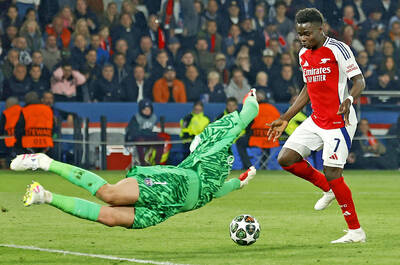In New York, gyms — commitments to which swell every January before being forgotten by Presidents Day — can trace their history to a man named Friedrich Ludwig Jahn, who began teaching outdoor athletics classes in Berlin early in the 19th century. Jahn taught gymnastics on devices of his own invention: balance beams, parallel bars and so on.
Over several decades, gymnastics societies, or Turnverein — whose members were called Turners — spread around Germany. The fitness centers that evolved functioned also as political clubs for those who supported democratic reforms in the German states. When a war came in 1848, many Turners fled to the US, where they set up their athletic societies in New York, Philadelphia, Baltimore, Maryland, and other major cities. Politics played a part.
FITNESS CULTURE
Every era gets the fitness culture it is meant to have. The aerobics craze, propelled by Jane Fonda, took off in the 1980s when the hedonism that distinguished the 1970s began to give way to a new urban ethic of busyness, long hours and the march toward earning more money. Beginning in the 1990s and continuing into this century, cities such as New York and Los Angeles saw the rise of high-end gyms, such as David Barton and Equinox, which ensured that working out, like drinking coffee, would become another socially tiered experience, with occupiers of top tax brackets doing it one way, and secretaries and civil servants another — left to leg lifts in front of their televisions or discounted gyms that did not aim to make you feel special.
More recently, there has been an explosion of boutique fitness studios, such as Barry’s Bootcamp, Pure Barre and Soul Cycle, the last of which is now in virtually every neighborhood in New York’s Manhattan south of 96th Street, the Hamptons and other places around the nation where real-estate values send jolts through the collective nervous system of ordinary people. Soul Cycle, like certain iterations of yoga, has been a success in the current moment, in part, because it makes submission to a luxury-brand experience feel like spiritual enrichment. On some level, it aims to alleviate your guilt. The US$34 you are spending on 45 minutes of stationary biking is going to improve you as a person, and the world, in turn, is likely to be a better place for all of your growth.
ORANGE ZONE
Orangetheory, the latest trend, comes with no veneer of the mystical, and little of the “wellness” jargon so popular now. The classes, which are an hour long, combine various modes of cardiovascular exercise with push-ups, some plyometrics and free weights. The idea originated in Fort Lauderdale, Florida, and made its way to New York in winter 2014, with a branch in Chelsea. In the coming weeks and months, Orangetheory studios are to open in Brooklyn Heights, Williamsburg and Park Slope. It is a franchise business, 325 branches of which have opened around the nation, with close to 500 more branches coming, including one in Tokyo.
Its gimmick is an added element of the Darwinian. Clients wear monitors during the sessions that measure heart rate and number of calories burned; individual performance statistics are then broadcast on electronic boards at the front of the class with your name — or, of course, if you anticipate slacking, your pseudonym. Levels of output are color-coded and the goal is to spend at least 12 minutes, but preferably more, in the orange zone, which measures maximum effort. The program stresses that your best effort is good enough, but competition, or rather the terror of winding up with the lowest scores in the class, keeps you breathlessly pushing forward.
SUPERBEINGS
A class I took on a recent Friday evening went back and forth between rowing machines and treadmill running before ending with a weight routine under the direction of a competent and eager teacher who called himself Coach Ben. I burned 545 calories in one hour and spent 16 minutes in the orange zone, which felt like an outcome I could go home and brag about until I noticed that ChrisP20 had burned 848 calories during the same time and had spent 22 minutes in the orange zone. I comforted myself with the assumption that ChrisP20 was tortured by DanielP27’s 908-calorie expenditure and full 30 minutes at maximum output. Who were these superbeings? It was impossible to know; Orangetheory does spare you the indignity of name tags.
Orangetheory was founded five years ago by a woman named Ellen Latham, who in the late 1990s had been let go from a job running a fitness center at a spa in Miami Beach.
She started teaching Pilates classes out of a spare bedroom in her house, but was perplexed by a single question, as she put it to me recently: “How could I get fat blowing off my Pilates clients?”
To surpass the limits of toning, she created the one-hour metabolic workout that grew into Orangetheory, incorporating work that drives up heart rate and helps people lose weight. If there are certain exercises in a class that a client cannot manage, instructors provide alternatives.

Freddie Freeman homered and drove in four runs, Shohei Ohtani also went deep and Roki Sasaki earned his first major league win as the Los Angeles Dodgers beat the Atlanta Braves 10-3 on Saturday night for their seventh straight victory. The Dodgers have won the first two games of the series to improve to 5-0 against Atlanta this year. Los Angeles’ three-game sweep at home early in the season left the Braves 0-7. Sasaki allowed three runs and six hits over five innings. The 23-year-old right-hander gave up a home run to Ozzie Albies, but received plenty of offensive support in his

Bayern Munich on Sunday were crowned German champions for the 34th time, giving striker Harry Kane his first major trophy, after second-placed Bayer 04 Leverkusen drew 2-2 at SC Freiburg. Bayern’s 3-3 draw at RB Leipzig on Saturday, when the Bavarians came from two goals down to take the lead before conceding a stoppage-time equalizer, meant defending Bundesliga champions Leverkusen needed to win at Freiburg to delay the title party. Leverkusen were two goals down before scoring twice in the final 10 minutes, but Xabi Alonso’s side could not find a third, as Bayern reclaimed the title at the first attempt after

INTER AWAIT: Superb saves by PSG ’keeper Gianluigi Donnarumma inspired the victory, as Arsenal were punished for misses, including one by Bukayo Saka Arsenal on Wednesday fell short on the big stage again as their painful UEFA Champions League semi-final exit against Paris Saint-Germain left Mikel Arteta to rue his club’s failure to provide him with enough attacking options. Arteta’s side were unable to reach the Champions League final for the first time in 19 years as PSG clinched a tense 2-1 win at Parc des Princes. Trailing 1-0 from last week’s first leg in London, the Gunners made a blistering start to the second leg, but could not convert their chances as Gianluigi Donnarumma’s superb saves inspired PSG’s 3-1 aggregate victory. Arsenal were punished for

THRILLER: Raphinha gave Barca a 3-2 lead with two minutes remaining of regular time, but Francesco Acerbi equalized the game in the second minute of added time Davide Frattesi on Tuesday fired Inter into the UEFA Champions League final with an extra-time winner that gave the Italians a stunning 4-3 triumph over Barcelona, 7-6 on aggregate. Italy midfielder Frattesi won a tie for the ages under a downpour in Milan when he lashed home in the 99th minute, sending a packed and rocking San Siro wild with joy. Simone Inzaghi’s team will face either Arsenal or Paris Saint-Germain at the end of this month in Munich, Germany, where they would feel they have a great chance to be crowned kings of Europe for a fourth time after